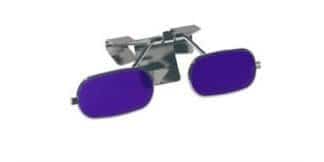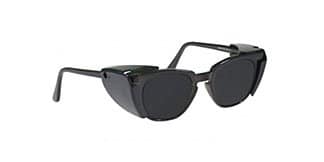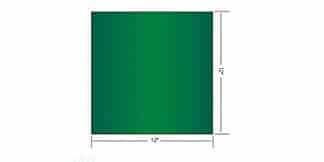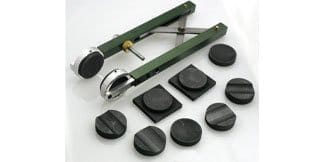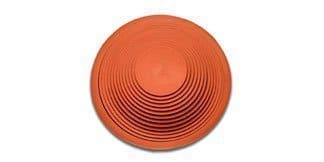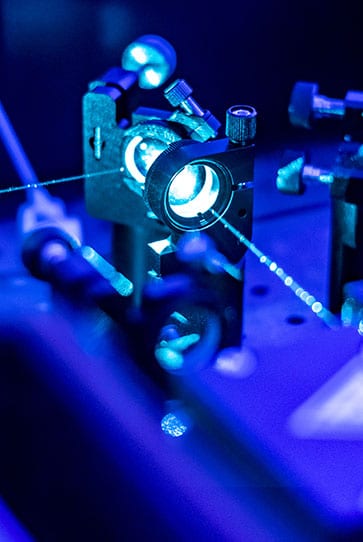If you already work in the laser industry you will be aware of the importance of protecting your eyes while you are in the workplace. However, many people do not know how to choose laser safety glasses that sufficiently protect their eyes against damage.
This article will tell you how to choose laser eyewear for the type of laser you are using.
How to Choose Laser Eyewear
Laser Safety Glasses come in a variety of form and are designed in the same way however not all glasses are suitable for the type of application you may be using. Lasers operate on a series of levels, with each laser emitting radiation which is different depending on the power of the laser, its operating system and the wavelength that it operates on. For this reason not all laser glasses cover the same lasers.
It can be easy to become confused when purchasing your laser glasses, so we have written this guide as an example of how you should determine how to choose your laser eyewear and whether your laser safety glasses are suitable for you.
Keep Yourself Informed
The laser industry is constantly evolving with new technology and improvements being developed all the time. In order to keep workers safe, laser eyewear must always be advanced to meet these changing parameters. When choosing to purchase a pair of laser safety glasses, you should ensure that the pair you have chosen are designed and manufactured with industry standards in mind.
Understand which laser you use
Finding out about the type of laser that you are using within the workplace is imperative when selecting your laser eyewear. Find out as much as you can about the beam delivery service and diameter, the power output and the specific wavelength that your laser operates on.
All of these details can be found on the laser itself or in the operating manual supplied by the manufacturer of your laser. This information is used to ensure that you are using the correct eyewear to protect your eyes against the dangers of laser use. Our safety glasses can protect your vision by blocking the wavelength with the correct optimal density.
Choosing the wrong glasses for the wrong wavelength can result in permanent eye damage.
Knowing the Optical Density and Wavelength
When choosing the right laser glasses, you will need to know the operational parameter of the laser you are using which will determine its wavelength you will need to absorb or block and at what optical density it requires.
Wavelength is used to determine the distance that a light wave repeats it shape over. These waves are measured from peak to peak or trough to trough and displayed on a light spectrum which will show waves from shortest to longest. The light spectrum is measured on nanometers or meters and is given the designation of the Greek letter lambda (uppercase/lowercase Λ λ).
Some of the waves within this light spectrum are not visible and these types of waves can be very dangerous for your eyes and so the operating wavelength of your laser is imperative when choosing the correct pair to ensure the correct wavelength is blocked.
Optical Density (sometimes known as absorbance) can be more difficult to understand however to put it in its simplest form, it determines how much of the light is absorbed at specific wavelengths. Optical density is therefore crucial in choosing laser glasses as it will tell you how much of the wavelengths are being absorbed by your glasses and how much protection the glasses are providing you.
When we talk about optical density within the laser industry, they can be denoted in ranges which shows the optical density against ranges of wavelengths.
If the glasses have a high optical density then they block more light from the wavelength, however the same is true for those with a lower optical density, they will block less light from the wavelength. If you are selecting a pair of laser glasses for use within the medical industry then it is recommended that you use a pair with an optical density of 5 or above. You can always choose a pair of glasses with a higher optical density than is suggested by the operating manual but you must never go below it.
Visible Light Transmission (VLT)
If you are already working with lasers you will be aware of visible light transmission (VLT). As the optical density of the glasses increases the lenses become darker and so you are always sacrificing visibility for safety.
In order to increase the visibility of the glasses whilst protecting your eyes, manufacturers have designed high optical density glasses with higher levels of VLT that still maintain the safety aspects while providing you with the visibility your need to do your job.
You will typically find the VLT listed alongside the wavelength that the glasses cover and the optical density.
Choosing filter lenses for laser safety glasses
Once you have got your head round the above you will need to choose the filter lens that will be most appropriate for the level of protection that you are seeking and the budget that you have in mind.
Laser filter lenses are usually made from glass or polycarbonate and are specifically designed with wavelength measurements and optical density in mind.
In the next section we will consider each type of filter and provide you with information on their key features and benefits, you can use this to make your final decision on which glasses to choose.
Glass Filters
Each filter that is chosen will depend on the power and wavelength of the laser that you are working with, so you may not be able to choose between using glass or polycarbonate filter lenses. Glass filters provide a higher VLT so may not be suitable for some lasers that you may be using. Some glass filters can be specifically designed to meet your individual requirements or you can use a combination of glass filters to cover the wavelengths required. Glass filters can be manufactured to be thicker, thereby increasing the optical density levels for the same wavelength.
Key Features of Using Glass Filters
- Best solution when working with mid to high powered density lasers
- Enhanced visible light transmission
- Superior visual properties
- Excellent colour balance
Polycarbonate Filters
These types of filters are not suitable for mid to high powered lasers however of the filter lenses available, Polycarbonate are the most affordable. The lenses are also resistance to impact and offer a lightweight alternative to the heavier glass option.
Polycarbonate lenses provide a broad band of filtering and wavelength absorption. Recently there have been vast improvements to these filters which now offer a greater VLT than they have done in previous years.
You should consider your supplier very carefully when selecting this lens type, as they will be required to understand the various dyes in relation to the absorption of wavelengths and they should be able to customise your lenses to meet your specific requirements.
Key Features of Using Polycarbonate Filters
- Many are available as impact resistant and fully compliant with ANSI 787 standard and CE certifications
- Typically available in the widest range of frames and styles
- Best used in low to mid power density lasers
- More affordable
- Lightweight
Nano Spec Filter or Thin Film Coated Technology
One of the newest and most cutting-edge technologies in the development of laser safety glasses is Nano Spec Filter or Thin Film Coated Technology. These filters are reflective coatings that can be incorporated onto glass or polycarbonate lenses to increase protection. They also provide the highest level of VLT across laser applications and are fast becoming the go to filter to improve protection and visibility.
Key Features of Nano Spec Filter or Thin Film Coated Technology
- Offers great protection involving most low to high powered density lasers
- Provides protection against femtosecond and Pico pulse protection
- Excellent colour balance
- Superior visible light transmission
- Increased optical density than other lenses
How to Choose Prescription Laser Safety Glasses
Many people may have a requirement for more specialised laser safety glasses which may include the use of a prescription to allow you to continue reading or to correct sight issues. Many manufacturers will provide laser safety glasses with fitted prescription lenses, however in some cases this may not be possible.
Should you require a prescription for your laser glasses, you should always look for those that are stamped with RX-able as they have been verified as frames that can be fitted with prescription lenses while continuing to provide you with the protection you require.
If budget allows, it would be beneficial for you to purchase a pair of prescription laser safety glasses and this will ensure you are comfortable when using your laser instead of relying on a pair of fitovers with your prescription pair underneath.
Two options are available to you if you are selecting prescription laser glasses
Single Vision Prescription Laser Safety Glasses
These lenses provide the same prescription throughout the entire lens and works to correct sight issues, however this type does not offer coverage for those requiring bifocals or reading glasses.
Lined Bifocal Prescription Laser Safety Glasses
Lined bifocal prescription glasses provide both bifocal / reading capabilities and correction of sight issues. The bottom half of the lens is made for near-sightedness and reading, with the top half appropriate for long-sightedness. There will be a line in the middle of the lens which will depict the two separate lenses. The bottom half of the lens is semi circular in shape with the top being flat. This flatness is often described as FT with a number alongside it. FT is for Flat Top and the number provides information on the width.
Picking Your Frames
The last piece of the puzzle when choosing your laser safety glasses is selecting the type of frames that you want. The type of lens you choose will have an impact on what frame styles are available to you.
While we would always push safety over style, we feel that you should be able to find something in our range that would suit your needs.
The more familiar you become with the information above, the easier picking laser safety glasses will become as if can be quite daunting to begin with. We hope that the information in this article is of use to you when choosing the most appropriate pair for your laser type.
However if you would like to speak to someone you can always get in touch.

